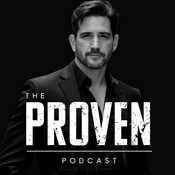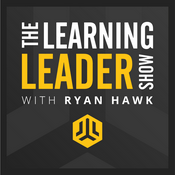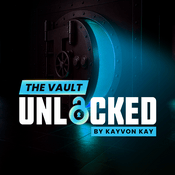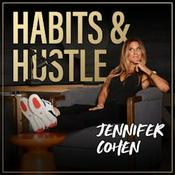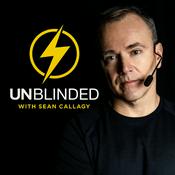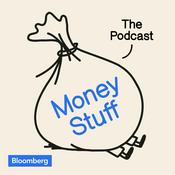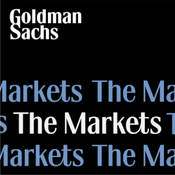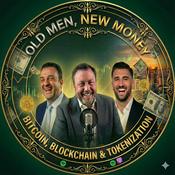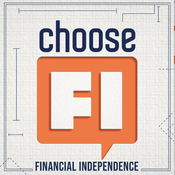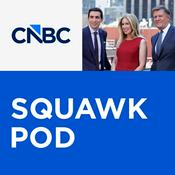646 episodes
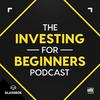
Back to the Basics: A Starter Guide for New Investors
12/18/2025 | 37 mins.
Want to go deeper on real companies with simple, long-term investing guidance? Subscribe to the Value Spotlight Newsletter, where Dave and Andrew share stock ideas, valuations, and lessons from real businesses straight to your inbox. In this episode, Dave and Andrew share a practical “back to basics” starter guide for new investors—focusing on the foundational decisions that matter before you ever pick a stock. They also cover the big beginner considerations—time horizon, risk tolerance, and fees—plus the most common starting paths like ETFs/index funds, 401(k)s (especially if there’s a match), robo-advisors, and eventually individual stocks. The throughline is simple: start small, stay consistent, and don’t interrupt compounding. Key Topics Covered: Start with your “why” so you don’t quit when motivation fades Think long-term: volatility is normal, time horizon is everything Risk tolerance matters more than “the perfect pick” Fees quietly destroy compounding (and add up fast) Simple starting paths: ETFs/index funds, 401(k) match, and easing into individual stocks Timestamps: 00:00 – Intro 01:55 – Why invest: savings accounts vs. stock market returns + inflation 04:34 – Lifestyle inflation 05:24 – Compounding 07:16 – Volatility short-term vs. growth long-term 09:01 – Risk tolerance 11:36 – Don’t chase returns 12:24 – The “hole in the boat” that kills compounding 15:39 – Open a brokerage account (it’s easier than ever) 19:13 – 401(k) match: “free money” 20:45 – Robo-advisors: convenience vs. control 27:24 – Best time to start 29:08 – “Stock market is a casino” fear 32:42 – Final push Resources Mentioned: The Value Spotlight Newsletter: https://einvestingforbeginners.com/value-spotlight-newsletter/ Have questions or want your story featured? Email the show at [email protected] or comment below. Your feedback shapes the podcast! Remember, invest with a margin of safety—emphasis on the safety. Have a great week, and we’ll talk to you next time. Timestamps are generated by artificial intelligence, and are not 100% accurate depending on the platform used for listening. Today’s show is sponsored by: Go to SHOPIFY.COM/beginners to start selling with Shopify today. https://www.shopify.com/beginners Download the Plynk app today to start building your investing confidence: https://plynkinvest.app.link/IFB Go to auraframes.com and use promo code BEGINNERS at checkout to get $35 off https://auraframes.com/ Get your free quote and see how much you could save at SelectQuote.com/beginners Interested in how your company sponsor the show? Reach us at [email protected] SUBSCRIBE TO THE SHOW Apple | Spotify | YouTube | Amazon | Tunein Learn more about your ad choices. Visit megaphone.fm/adchoices

AAR28 - Confident Investing w/ Sean Tepper
12/16/2025 | 38 mins.
You can download Evan’s free monthly budgeting spreadsheet here:https://einvestingforbeginners.com/budget/ In this episode of At Any Rate, Evan Raidt sits down with Sean Tepper, CEO and founder of TYKR, a platform designed to simplify stock analysis and help everyday investors buy and sell with more confidence. Sean shares how the 2008 crash became his wake-up call, why most beginners get stuck in analysis paralysis, and how TYKR’s “traffic light” system turns a mountain of data into a simple signal: on sale, watch, or overpriced. Sean also breaks down the “4M Confidence Booster” (math, meaning, moat, management), what signals can help you decide when to sell, and why long-term wealth is built by staying disciplined—especially when the market gets volatile. Topics Covered: The traffic light system: on sale (green), watch (gray), overpriced (red) Why analysis paralysis stops new investors from taking action The “$100 a week” investing mindset and consistency over time Reducing risk with the 4M framework: math, meaning, moat, management Individual stocks vs. index funds/ETFs depending on your timeline Timestamps: 00:00 Intro: Evan welcomes Sean Tepper 02:12 From investing frustration to building TYKR 02:56 The “traffic light” concept: simplify 100 data points into a decision 05:00 Analysis paralysis and why beginners freeze 07:00 From Excel stock analysis to software 08:30 Investing vs. trading (and why trading usually loses) 12:17 Treat investing like a “mandatory bill” 15:06 The 4M Confidence Booster: math, meaning, moat, management 20:16 Wealth building (10–15 stocks) vs. wealth protection (funds near retirement) 22:34 Dividend strategy in retirement 24:05 “Easy things get complicated” + staying disciplined 25:29 Why “never skip a month” matters (especially in volatility) 28:58 Recency bias vs. long-term market history 32:02 Where to find Sean + closing Resources Mentioned: TYKR (T-Y-K-R): https://tykr.com/ Free monthly budgeting spreadsheet: https://einvestingforbeginners.com/budget/ Email Evan: [email protected] Have feedback or ideas for Evan? Comment below or email him at [email protected]—your suggestions help shape future episodes. Remember, financial freedom is built one smart move at a time. Keep it simple, keep it steady, and at any rate, we’ll see you next time. Timestamps are generated by artificial intelligence, and are not 100% accurate depending on the platform used for listening. Today’s show is sponsored by: Go to SHOPIFY.COM/beginners to start selling with Shopify today. Download the Plynk app today to start building your investing confidence: https://plynkinvest.app.link/IFB Go to auraframes.com and use promo code BEGINNERS at checkout to get $35 off Get your free quote and see how much you could save at SelectQuote.com/beginners Interested in how your company sponsor the show? Reach us at [email protected] SUBSCRIBE TO THE SHOW Apple | Spotify | YouTube | Amazon | Tunein Learn more about your ad choices. Visit megaphone.fm/adchoices

Earnings Smackdown: Snowflake, MongoDB, Salesforce, and the Rise of Discount Retail
12/15/2025 | 47 mins.
Want to go deeper on real companies with simple, long-term investing guidance? Subscribe to the Value Spotlight Newsletter, where Dave and Andrew share stock ideas, valuations, and lessons from real businesses straight to your inbox. In this episode, Dave and Andrew break down the latest earnings from top SaaS and discount retail companies—Snowflake, MongoDB, Salesforce, CrowdStrike, Dollar Tree, and Five Below. They dig into cloud migration trends, SaaS valuation metrics like the Rule of 40, stock-based compensation, and the impact of economic shifts on discount retailers. Key Topics Covered: Snowflake, MongoDB, Salesforce, CrowdStrike, Dollar Tree, Five Below earnings Cloud migration and SaaS business models Rule of 40 and SaaS valuation Discount retailers’ performance in the current economy How to avoid chasing hot industries Timestamps: 00:00 – Intro: episode overview and earnings call focus 00:00:48 – SaaS breakdown: Snowflake, MongoDB, CrowdStrike, Salesforce 00:01:21 – Snowflake’s earnings and cloud migration 00:03:24 – Data growth and Snowflake’s niche 00:04:27 – Stock performance and IPO context 00:06:01 – Salesforce: revenue, margins, CRPO 00:07:04 – Rule of 40 explained 00:08:00 – Salesforce’s AI products 00:09:51 – Acquisitions to profitability 00:12:03 – Management credibility and strategy 00:13:45 – Stock-based compensation 00:15:01 – MongoDB’s cloud shift and AI 00:18:35 – Growth, profitability, sector momentum 00:20:07 – CrowdStrike earnings and ARR 00:22:03 – CrowdStrike’s modules and platform 00:24:37 – Retail: Dollar Tree, Dollar General, Five Below 00:26:09 – Discount retailer performance 00:29:41 – Dollar General, tariffs 00:31:35 – Five Below’s growth and strategy 00:36:01 – Comparing sectors and metrics 00:41:05 – Avoiding hot industry chasing 00:41:58 – Closing thoughts and sign-off Resources Mentioned: The Value Spotlight Newsletter: https://einvestingforbeginners.com/value-spotlight-newsletter/ Have questions or want your story featured? Email the show at [email protected] or comment below. Your feedback shapes the podcast! Remember, invest with a margin of safety—emphasis on the safety. Have a great week, and we’ll talk to you next time. Timestamps are generated by artificial intelligence, and are not 100% accurate depending on the platform used for listening. Today’s show is sponsored by: Go to SHOPIFY.COM/beginners to start selling with Shopify today. https://www.shopify.com/beginners Download the Plynk app today to start building your investing confidence: https://plynkinvest.app.link/IFB Go to auraframes.com and use promo code BEGINNERS at checkout to get $35 off https://auraframes.com/ Get your free quote and see how much you could save at SelectQuote.com/beginners Interested in how your company sponsor the show? Reach us at [email protected] SUBSCRIBE TO THE SHOW Apple | Spotify | YouTube | Amazon | Tunein Learn more about your ad choices. Visit megaphone.fm/adchoices

Semiconductors Demystified w/ Nick Rossolillo: Supply Chain, Cyclicality, and Top Chip Stocks
12/11/2025 | 53 mins.
Want to go deeper on real companies with simple, long-term investing guidance? Subscribe to the Value Spotlight Newsletter, where Dave and Andrew share stock ideas, valuations, and lessons from real businesses straight to your inbox. In this episode, Dave welcomes Nick Rossolillo from Chip Stock Investor for a deep dive into the semiconductor industry. They break down what semiconductors are, how the supply chain works, why the industry is so complex, and the critical companies powering technology today. Nick also shares why “semiconductors are not the new oil,” what’s driving industry growth, and how investors can avoid common mistakes. Key Topics Covered: What is a semiconductor? Why the industry is so complex and collaborative The AI boom, accelerated computing, and industry growth Moore’s Law, 3D stacking, and industry disruption How to track supply chain trends and avoid valuation traps Timestamps: 00:00 – Intro & Nick from Chip Stock Investor 01:00 – What is a semiconductor? 03:00 – The chip supply chain explained 05:30 – Key companies: Synopsys, Cadence, ASML, TSMC, Nvidia, AMD 10:00 – How much tech do you need to know as an investor? 13:00 – Industry complexity & collaboration 16:00 – AI, accelerated computing, and industry growth 20:00 – Cyclicality, valuation traps, and supply chain signals 30:00 – Moore’s Law, 3D stacking, and future disruptions 40:00 – Investing lessons, capital allocation, and staying power 45:00 – Where to find more from Nick & Casey 47:00 – Sign-off: Invest with a margin of safety Resources Mentioned: The Value Spotlight Newsletter: https://einvestingforbeginners.com/value-spotlight-newsletter/ Chip Stock Investor (Nick & Casey’s research): https://chipstockinvestor.com/ Have questions or want your story featured? Email the show at [email protected] or comment below. Your feedback shapes the podcast! Remember, invest with a margin of safety—emphasis on the safety. Have a great week, and we’ll talk to you next time. Timestamps are generated by artificial intelligence, and are not 100% accurate depending on the platform used for listening. Today’s show is sponsored by: Go to SHOPIFY.COM/beginners to start selling with Shopify today. https://www.shopify.com/beginners Download the Plynk app today to start building your investing confidence: https://plynkinvest.app.link/IFB Go to auraframes.com and use promo code BEGINNERS at checkout to get $35 off https://auraframes.com/ Get your free quote and see how much you could save at SelectQuote.com/beginners Interested in how your company sponsor the show? Reach us at [email protected] SUBSCRIBE TO THE SHOW Apple | Spotify | YouTube | Amazon | Tunein Learn more about your ad choices. Visit megaphone.fm/adchoices

AAR27 - How do I decide how much to save?
12/09/2025 | 36 mins.
You can download Evan’s free monthly budgeting spreadsheet here:https://einvestingforbeginners.com/budget/ In this episode of At Any Rate, Evan Raidt breaks down the practical process of deciding how much to save, spend, and invest—using a clear, percentage-based system that works for any income. Evan walks through the 50-30-20 rule (and how he tweaks it himself), explains why percentages matter more than dollar values, and shows how to use a real-world budget outline (grab the free sheet here). You’ll learn where to start, how to handle must-have savings like 401k matches and HSAs, and how to prioritize Roth IRAs and high-yield savings accounts with any leftover funds. Topics Covered: Why percentages matter more than dollar amounts The 50-30-20 rule (and Evan’s personal tweaks) How to find your true net income for budgeting The power of maxing your 401k match and using an HSA Using credit cards only as payment vehicles (not for emergencies) Timestamps: 00:00 Intro and why this topic matters 02:00 The problem with flashy dollar amounts—percentages are what count 04:30 How to use the free budget sheet 06:00 Setting your target percentages (50-30-20 and beyond) 09:00 Calculating net income and why it matters 12:00 Breaking down “needs” and why debt payments go here 15:00 Must-have savings: 401k match, HSA, home equity 18:00 Planning for big goals (cars, houses, etc.) 20:00 Prioritizing Roth IRA and high-yield savings accounts 24:00 Tracking and adjusting your “wants” 27:00 What to do with leftover funds 29:00 Final tips: avoid regular savings accounts, use credit cards for rewards only, and keep things hands-off with index funds 31:00 Wrapping up and how to get started Resources Mentioned: Free budgeting spreadsheet: https://einvestingforbeginners.com/budget/ Roth IRA basics: https://www.investopedia.com/terms/r/rothira.asp High-yield savings accounts: https://www.nerdwallet.com/best/banking/high-yield-online-savings-accounts Vanguard VOO ETF info: https://investor.vanguard.com/investment-products/etfs/profile/voo Have feedback or ideas for Evan? Comment below or email him at [email protected]—your suggestions help shape future episodes. Remember, financial freedom is built one smart move at a time. Keep it simple, keep it steady, and at any rate, we’ll see you next time. Timestamps are generated by artificial intelligence, and are not 100% accurate depending on the platform used for listening. Today’s show is sponsored by: Go to SHOPIFY.COM/beginners to start selling with Shopify today. Download the Plynk app today to start building your investing confidence: https://plynkinvest.app.link/IFB Go to auraframes.com and use promo code BEGINNERS at checkout to get $35 off Get your free quote and see how much you could save at SelectQuote.com/beginners Interested in how your company sponsor the show? Reach us at [email protected] SUBSCRIBE TO THE SHOW Apple | Spotify | YouTube | Amazon | Tunein Learn more about your ad choices. Visit megaphone.fm/adchoices
More Business podcasts
Trending Business podcasts
About The Investing for Beginners Podcast - Your Path to Financial Freedom
Listen to The Investing for Beginners Podcast - Your Path to Financial Freedom, Money Rehab with Nicole Lapin and many other podcasts from around the world with the radio.net app

Get the free radio.net app
- Stations and podcasts to bookmark
- Stream via Wi-Fi or Bluetooth
- Supports Carplay & Android Auto
- Many other app features
Get the free radio.net app
- Stations and podcasts to bookmark
- Stream via Wi-Fi or Bluetooth
- Supports Carplay & Android Auto
- Many other app features


The Investing for Beginners Podcast - Your Path to Financial Freedom
download the app,
start listening.


